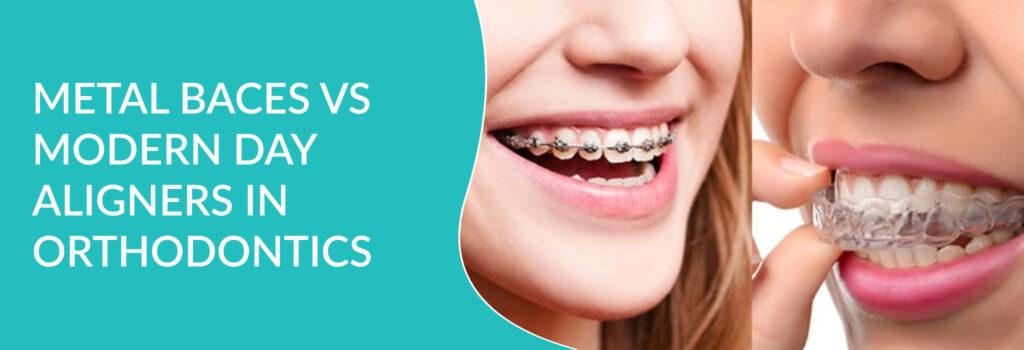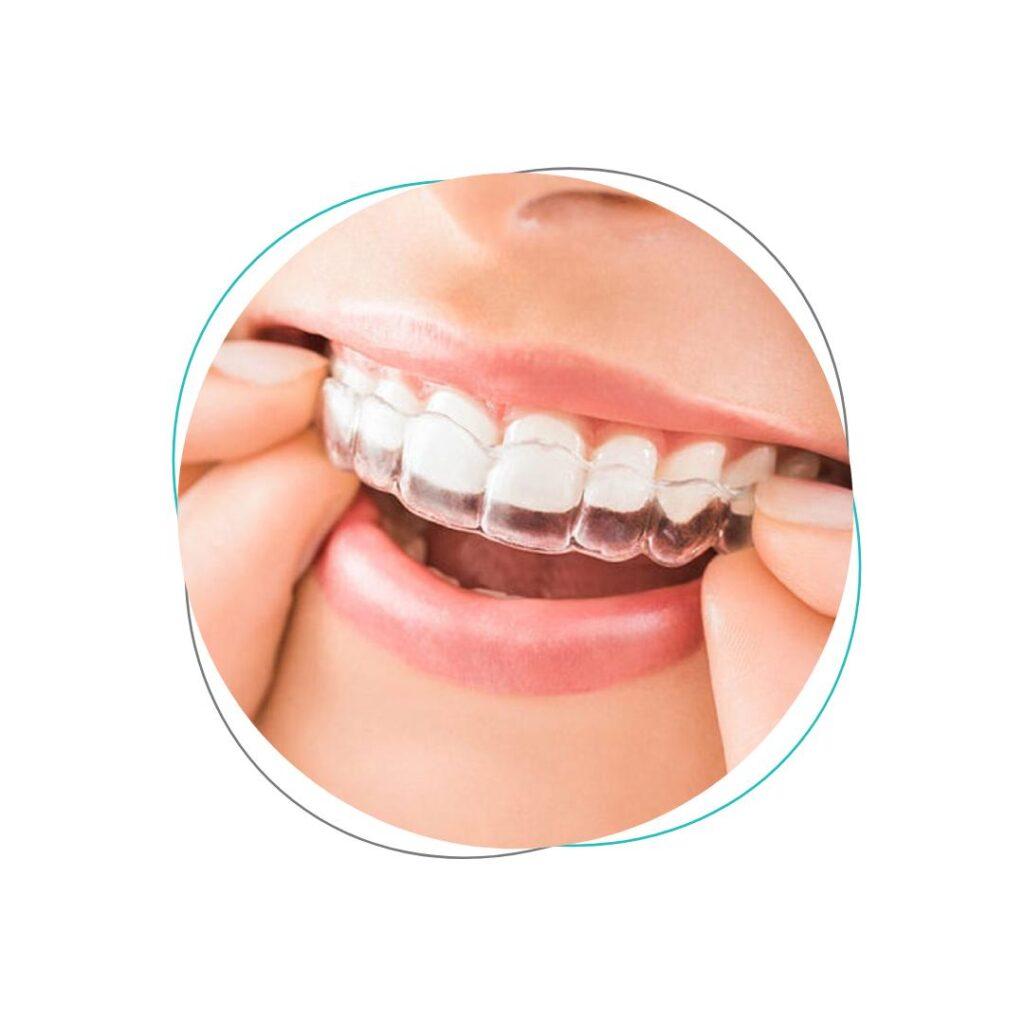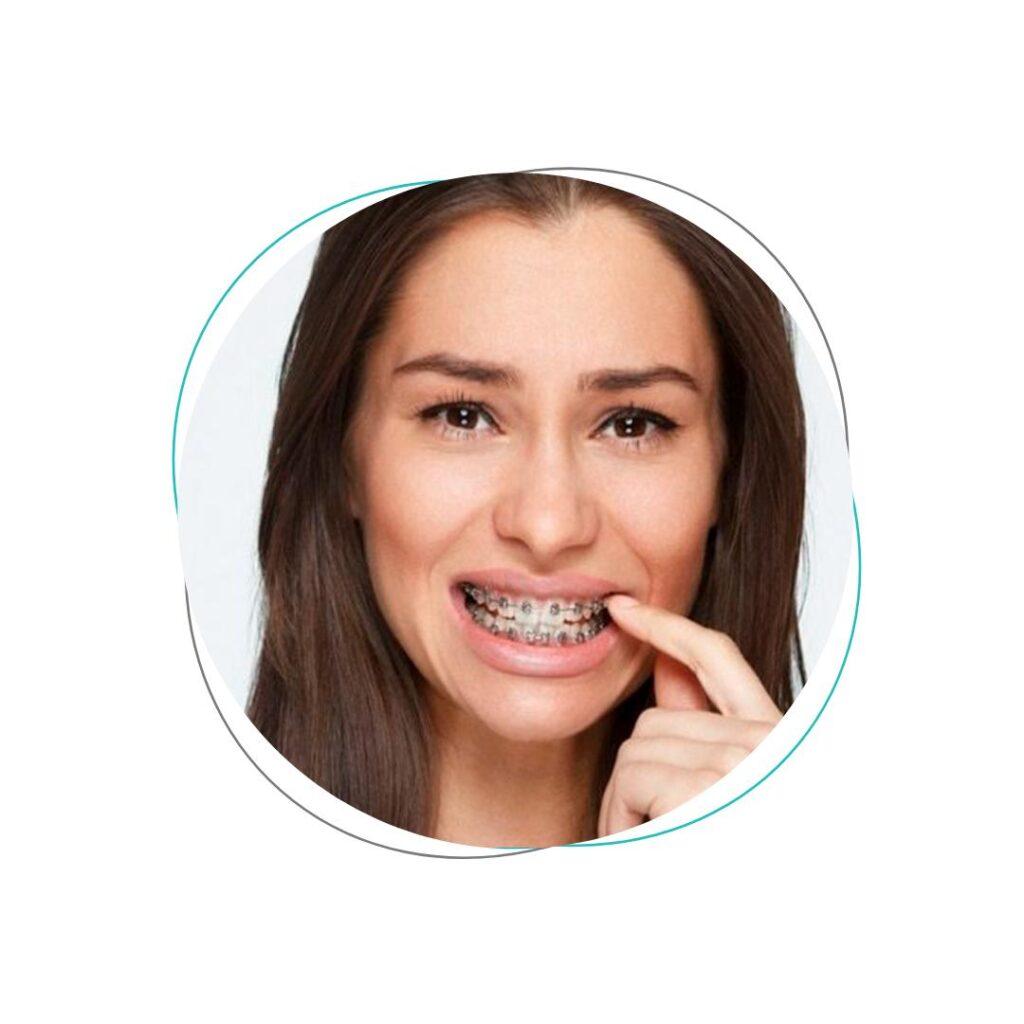
Introduction :
Braces are either metal or porcelain and are attached to your teeth. Metal wires and rubber bands are then used to provide a force to help the teeth move into the correct position.
Aligners are made of plastic and are custom made to fit your teeth. Each aligner moves the teeth step by step towards the final position. Small bumps of composite resin (tooth colored filling material) are attached to various teeth to help the aligner grip the tooth so it can be moved correctly.
Aligners
Advantages:
Appearance:
Aligners are less noticeable than braces as they are clear and custom made to fit your teeth. This can be a factor for many, but not all patients.
Diet:
As you remove your aligners to eat, your diet is not affected. You will still be able to eat the foods you like. Some foods are difficult or uncomfortable to eat with braces and can cause breakages which can delay the treatment and require extra visits to have repairs carried out.
Hygiene:
As your aligners are removable, you can brush and floss as per normal. This is significant as cleaning your teeth with braces in place is challenging for many patients.
Appointments:
As the tooth movement is pre-planned by your Orthodontist, the actual visits to the practice are usually much simpler and, in some cases, can be fewer overall. This can be a big advantage for all those who are living busy lives!
Comfort:
Generally speaking, aligners are more comfortable than braces. Although the teeth can still be somewhat tender as they begin to move, the lips and cheeks tend to be less irritated as the plastic aligner is smoother than the metal or porcelain braces. This may be particularly relevant for those playing contact (or semi-contact) sports

Disdvantages:
Compliance:
Aligners need to be worn 22 hours a day to be effective. This means they are only removed for eating and cleaning. Compliance equals results!, Alignersneed to be removed for eating and cleaning. Some patients may find it difficult to do this in public if they feel shy or embarrassed about it.
Effectiveness:
Aligners cantreat most cases, but not all. In complex situations, your orthodontist may recommend braces rather than aligners. If you insist on aligners anyway, the final result may not be as precise.
Cost:
In some cases, the cost of aligners can be more than braces. However, in many cases they are similar or the same. Your orthodontist can discuss the cost of your options before you decide.
Contact our experts to know more about Dental Aligners

BRACES
Advantages:
Applicable to all cases:
Whereas aligners can treat most cases, braces can be used treat all cases. That means braces are always an option.
Variety of braces:
Braces can be various types of metal braces, with or without colors. There are also porcelain braces which are much more discreet than regular metal braces.
Compliance:
Because the braces are fixed to your teeth, you cannot forget to wear them, or lose them. This can be useful for some patients if they are not internally motivated to comply with wearing aligners adequately.

Disadvantages:
Hygiene:
It is much more challenging to clean your teeth with braces rather than aligners. If cleaning is not done adequately, real damage can occur to the teeth. This may lead to the decision to remove your braces early, before an optimal final result has been achieved.
Diet:
With braces attached to your teeth, your diet will need to be modified. Hard foods (or night time grinding) cancause breakages which can slow or stop your treatment progress. Also, as you are more prone to decay with braces on, sugary sticky foods need to be avoided. A poor diet, plus inadequate hygiene is a recipe for disaster!
Comfort:
Generally speaking, braces are more likely to cause discomfort as they can rub on the cheeks and lips. Somepatients suffer from this more than others and is often a consideration for people involved in some sports and other activities.
Appearance:
Braces (even the porcelain ones) are more noticeable than aligners. This is important for some patients depending on their occupation, hobbies and personality.
Appointment:
The appointments needed for braces tend to be longer and more involved, with active adjustments needed to be carried out in the chair. There may be a need for more frequent visits as well.



